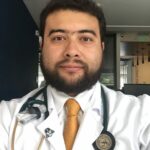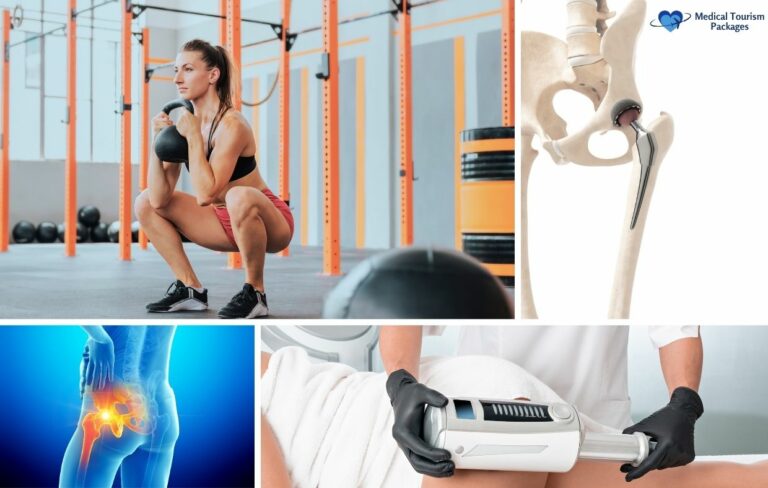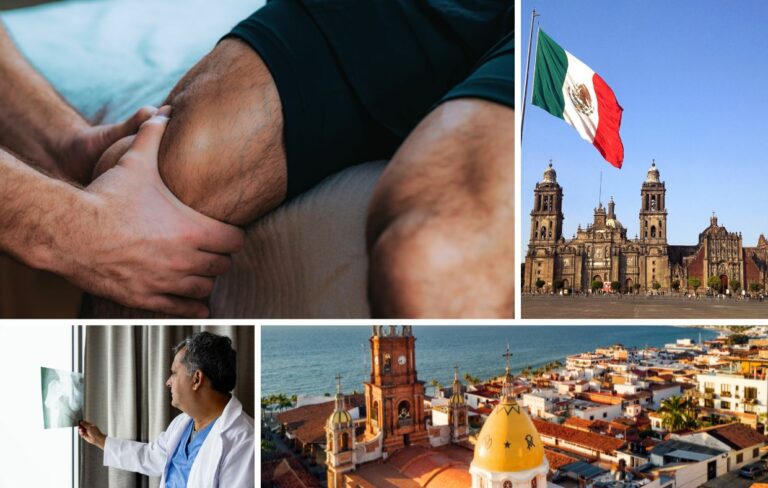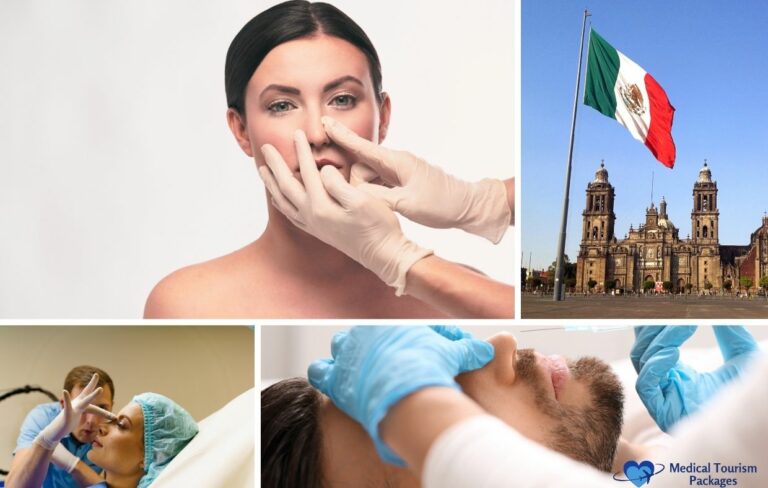Book Appointment Now
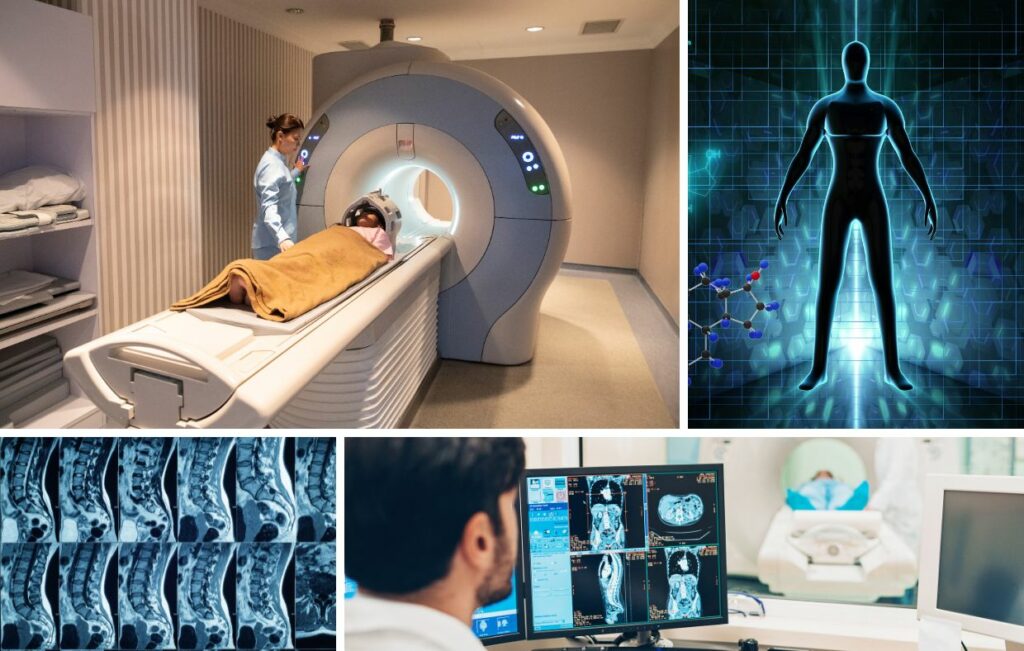
Full Body MRI Scan in Latin America: Safe, Fast & Affordable Medical Imaging
Getting a full body MRI in the United States can cost between $1,500 and $5,000 — and that’s if you can get an appointment within a reasonable timeframe. Many Americans are discovering they can get the same high-quality scan in Latin America for $400-800, often with appointments available within days rather than months.
This isn’t about cutting corners on healthcare. Countries like Brazil, Mexico, and Costa Rica have built world-class medical facilities that match or exceed U.S. standards. Brazil alone has 70 JCI-accredited healthcare organizations, more than most U.S. states.
Understanding Full Body MRI Scans in Latin America’s Medical Tourism Context
The shift toward Latin American medical tourism for diagnostic imaging reflects both economic necessity and practical advantages. While U.S. patients face mounting healthcare costs and extended wait times, southern neighbors have invested heavily in state-of-the-art imaging technology and streamlined patient processes. The diagnostic imaging market in Latin America is growing at 6.3% annually through 2033, driven by both domestic demand and medical tourism revenue.
What is a Full Body MRI Scan and Why Choose Latin America?
A full body MRI uses magnetic fields and radio waves to create detailed images of your organs, bones, and soft tissues without radiation. The entire process takes 30-90 minutes depending on how many areas need examination. These scans can detect tumors, cardiovascular problems, neurological disorders, and musculoskeletal issues that might not show up on other imaging tests.
Here’s what makes Latin America attractive: you’ll save 50-80% compared to U.S. prices while getting appointments within 0-5 days instead of waiting weeks or months. The technology is identical — many facilities use the same GE, Siemens, and Philips machines you’d find at Mayo Clinic or Johns Hopkins.
The numbers tell the story. While Americans wait an average of 24 days for an MRI appointment, patients in Mexico City can often get scanned the same week they call. Results typically come back in 5-7 business days, complete with English-language reports.
Latin America’s Emergence as a Global Medical Imaging Hub
Brazil dominates the region’s healthcare spending, accounting for 46.4% of total government healthcare investment. This has created a robust medical infrastructure that serves both local populations and international patients.
| Country | Top Medical Cities | JCI-Accredited Facilities | Primary Advantages |
|---|---|---|---|
| Brazil | São Paulo, Rio de Janeiro | 70 | Most advanced technology, highest specialist concentration |
| Mexico | Tijuana, Mexico City, Guadalajara | 8 | Closest to US, lowest costs, no visa required |
| Costa Rica | San José, Escazú | 3 | Established reputation, English-speaking staff |
| Colombia | Bogotá, Medellín, Cartagena | 6 | Excellent value, 24 top-ranked hospitals in region |
| Panama | Panama City | 2 | US-trained doctors, USD currency, familiar standards |
Technology Standards and Equipment Quality
You’ll find three main types of MRI machines across Latin America, each with specific advantages for different clinical needs:
| MRI Type | Magnetic Strength | Best For | Typical Cost | Scan Time |
|---|---|---|---|---|
| 1.5T Closed | 1.5 Tesla | General imaging, patients with implants | $400-600 | 30-45 minutes |
| 3T Closed | 3.0 Tesla | Brain, spine, small joints | $600-800 | 15-30 minutes |
| Open MRI | 0.3-1.2 Tesla | Claustrophobic patients, children | $500-700 | 45-90 minutes |
Some facilities like Médica Sur in Mexico City have both 1.5T and 3T scanners under one roof, allowing doctors to choose the best option for each patient’s specific needs. The machines use GE’s SIGNA series with AI-powered image reconstruction, Siemens’ MAGNETOM platform with BioMatrix technology, and Philips’ helium-free systems.

Safety Standards and International Accreditations
Patient safety in Latin American medical tourism relies on multiple layers of accreditation, professional standards, and regulatory oversight. The region has made substantial investments in meeting international healthcare standards, with many facilities exceeding requirements found in U.S. hospitals. Understanding these quality measures helps patients make informed decisions about where to receive care.
JCI Accreditation and What It Means for Patients
Joint Commission International (JCI) accreditation costs hospitals around $46,000 annually to maintain — they don’t pursue it lightly. It’s the gold standard for international healthcare quality, with rigorous standards covering patient safety, infection control, and clinical protocols.
Brazil leads Latin America with 70 JCI-accredited organizations, followed by Peru (11), Colombia (6), and Mexico (8). Notable facilities include CIMA Hospital in San José, Costa Rica, and Fundación Cardioinfantil in Bogotá, Colombia. These hospitals meet the same standards as top U.S. medical centers.
Medical Professional Qualifications and Training
Many radiologists and technicians in Latin America’s top facilities trained at U.S. or European institutions. At Médica Sur in Mexico City, for example, several radiologists completed fellowships at institutions like Johns Hopkins and Harvard Medical School.
Language barriers are minimal at premier facilities. Most doctors and technicians speak English fluently, and many facilities provide bilingual reports. Some hospitals have dedicated international patient coordinators who handle everything from appointment scheduling to results explanation.
Board certifications vary by country but follow similar standards to U.S. requirements. Colombian radiologists, for instance, must complete a four-year residency plus ongoing education requirements that mirror American standards.
Patient Safety Protocols and Standards
Pre-scan safety screenings are thorough regardless of location. You’ll go through metal detection, complete detailed medical history forms, and have contraindications reviewed by qualified technicians.
Infection control measures at JCI-accredited facilities often exceed what you’d find at many U.S. hospitals. These include UV sanitization systems, HEPA air filtration, and strict equipment sterilization protocols.
Emergency response capabilities at major medical tourism hospitals include on-site emergency departments, intensive care units, and relationships with local trauma centers. Most facilities have direct relationships with medical evacuation services for serious emergencies.
Advanced Imaging Technology Specifications
The MRI machines in Latin America’s top hospitals aren’t hand-me-downs from U.S. facilities — they’re often newer. Equipment downtime is rare at major medical tourism destinations, with preventive maintenance following manufacturer specifications and many facilities using the same service contracts as U.S. hospitals.
Technical capabilities match what you’d find anywhere:
- Image resolution: Up to 0.5mm slice thickness
- Scan time: 15-45 minutes per body region
- Advanced features: Motion correction, noise reduction, contrast enhancement
- AI integration: Automated image analysis and quality control
Speed and Efficiency: The Medical Tourism Advantage
The operational efficiency of Latin American medical facilities often surpasses U.S. healthcare systems, particularly in scheduling flexibility and result turnaround times. This efficiency stems from less bureaucratic overhead, direct-pay systems that eliminate insurance processing delays, and dedicated medical tourism departments designed to serve international patients quickly.
Appointment Availability and Scheduling
| Region | Average Wait Time | Same-Week Availability | Emergency Scheduling |
|---|---|---|---|
| United States | 24 days average | Rare | 1-3 days |
| Canada | 84 days average | Very rare | 2-5 days |
| Latin America | 0-5 days | Common | Same day possible |
Major facilities offer online booking systems with real-time availability. Same-week appointments are common, and some facilities even accommodate same-day urgent requests. Many hospitals provide 24/7 scheduling support with English-speaking coordinators who’ll work around your travel schedule.
Scan Duration and Comfort Measures
Full body MRI scans typically take 30-60 minutes, similar to U.S. facilities. However, patient comfort measures often exceed what you’d find at home:
- Music systems: Choose your own playlist or relaxing nature sounds
- Communication: Two-way intercom systems for constant contact with technicians
- Climate control: Adjustable temperature and air flow
- Lighting: Soft LED lighting instead of harsh fluorescents
For claustrophobic patients, some facilities provide anti-anxiety medication (with proper medical supervision) or offer open MRI alternatives. Family members can often stay in the scanning room for support, something that’s increasingly rare in U.S. facilities.
Results Delivery and Digital Access
Results are typically available within 5-7 business days, though urgent cases can be rushed if needed. You’ll receive detailed medical reports from board-certified radiologists, patient-friendly summaries in plain English, digital images on CD/USB or secure download, and DICOM files in industry-standard format compatible with any medical facility.
Many facilities offer telemedicine follow-up consultations, allowing you to discuss results with the radiologist via video call after returning home. This service is often included in the package price.
Cost Analysis: Understanding the Value Proposition
The financial advantage of Latin American medical tourism extends beyond simple procedure costs to include comprehensive value packages that often exceed U.S. service standards. Understanding the full cost structure helps patients make informed decisions about medical travel investments.
Detailed Price Comparisons by Country
| Country | Full Body MRI Cost | Savings vs US | Additional Benefits |
|---|---|---|---|
| Mexico | $400-800 | 70-85% | No visa required, close proximity |
| Costa Rica | $500-900 | 65-80% | Established tourism infrastructure |
| Brazil | $600-1,000 | 60-75% | Most advanced technology available |
| Colombia | $450-750 | 70-82% | Excellent value, top-ranked facilities |
| Panama | $500-850 | 65-80% | USD currency, US-trained doctors |
| United States | $1,500-5,000 | Baseline | Insurance complications, long waits |
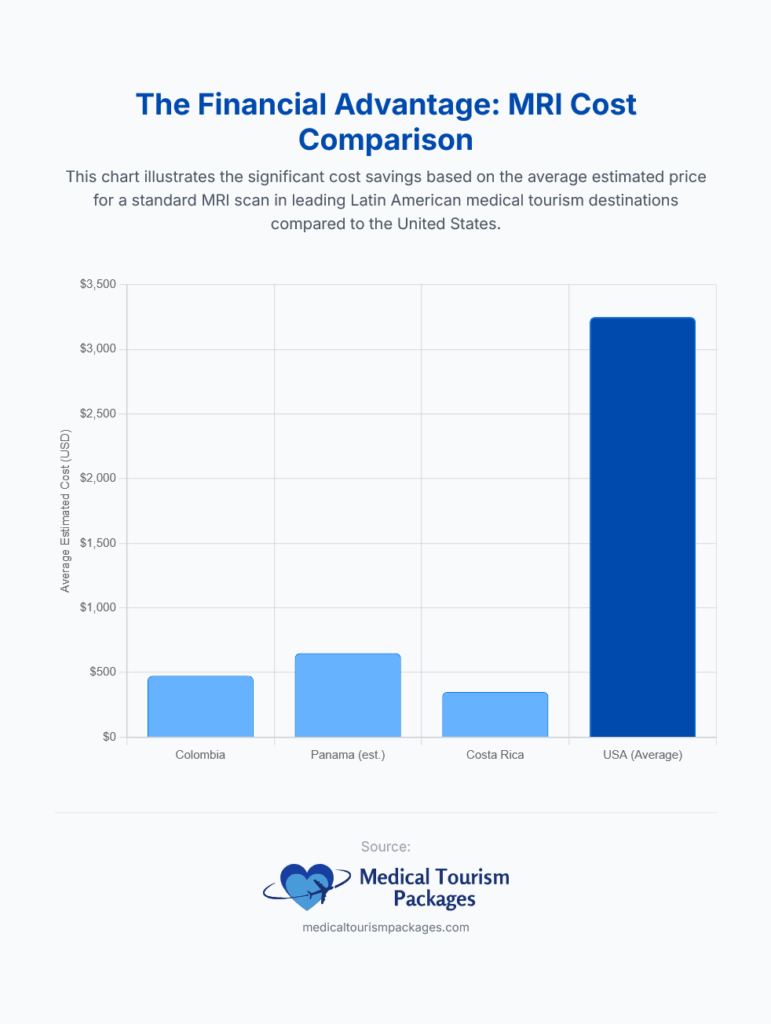
Price factors include facility type (hospital vs. imaging center), technology level (1.5T vs. 3T), and location (major cities cost more than smaller markets). Even including travel costs, most patients save $1,000-3,000 per scan.
What’s Included in Medical Tourism MRI Packages
Standard packages typically include: MRI scan and radiologist interpretation, pre-scan consultation, written reports in English, digital images on CD/USB, and follow-up consultation (virtual available).
Many facilities offer add-on services like airport transportation ($50-100 round trip), hotel accommodation at partner rates, interpreter services ($100-200 per day if needed), and personal medical tourism coordinator assistance.
What’s NOT typically included: travel insurance, additional procedures if abnormalities are found, prescription medications, and extended hospital stays for complications.
Payment Options and Financial Planning
Most facilities accept major credit cards (Visa, MasterCard, American Express) and wire transfers. Cash payments often receive 5-10% discounts. Medical financing is available through companies like CareCredit, which offers loans up to $50,000 for medical procedures abroad.
U.S. health insurance rarely covers elective procedures abroad, but you may be able to use Health Savings Account (HSA) or Flexible Spending Account (FSA) funds. The procedure may be tax-deductible as a medical expense if it exceeds 7.5% of your adjusted gross income.
All reputable facilities provide upfront, written quotes with no hidden fees. Be wary of any facility that won’t provide clear pricing before your arrival.
Planning Your Medical Tourism MRI Experience
Successful medical tourism requires careful planning across multiple domains: travel logistics, facility selection, accommodation arrangements, and continuity of care coordination. The complexity of international medical travel demands attention to details that domestic patients never consider.
Travel Documentation and Entry Requirements
| Country | Visa Required | Passport Validity | Additional Requirements |
|---|---|---|---|
| Mexico | No (180 days) | 6 months | FMM tourist card |
| Costa Rica | No (90 days) | 6 months | Return ticket proof |
| Brazil | Yes ($160) | 6 months | Apply 2+ weeks ahead |
| Colombia | No (90 days) | 6 months | Health insurance recommended |
| Panama | No (90 days) | 3 months | Medical appointment documentation |
Keep copies of your medical appointment confirmation and hotel reservations. Some countries may ask about the purpose of your visit. Travel insurance with medical coverage is recommended, even though your scan is elective.
Selecting the Right Facility and Location
Use this checklist when evaluating facilities:
Must-haves: JCI or equivalent international accreditation, English-speaking staff and reports, modern equipment (ask about machine age and model), clear upfront pricing, and positive patient reviews from verified sources.
Red flags: Cash-only payments, no international accreditation, poor communication or delayed responses, prices significantly below market rates, and no verifiable doctor credentials.
Research facilities online through official websites, Google reviews, and medical tourism forums. The International Medical Travel Journal maintains updated lists of accredited facilities.
Accommodation and Local Support Services
Choose accommodations near your medical facility to minimize travel stress. In Mexico City, stay in Polanco or Santa Fe districts near major hospitals. São Paulo’s Jardins or Vila Madalena neighborhoods offer easy access to medical centers. San José’s Escazú area is close to CIMA Hospital and other facilities. Bogotá’s Zona Rosa provides upscale hotels near medical facilities.
Many medical tourism hotels offer shuttle service to hospitals, refrigerators for medications, quiet rooms for recovery, English-speaking staff, and medical equipment rentals.
Managing Open MRI Options for Claustrophobic Patients
If enclosed spaces trigger anxiety, discuss open MRI options during booking. Available at facilities in Mexico City, São Paulo, and San José, though with limitations: longer scan times (45-90 minutes vs. 30-60 minutes), lower image quality that may miss subtle abnormalities, limited availability with fewer facilities offering open systems, and higher cost (often $100-200 more than standard MRI).
Alternative solutions include wide-bore MRI with larger opening than standard but still enclosed, sedation options with mild anti-anxiety medication (requires medical clearance), and preparation techniques like meditation, breathing exercises, and eye masks.
Post-Scan Procedures and Continuity of Care
The medical tourism experience extends well beyond the procedure itself, encompassing result interpretation, medical record transfer, and integration with home healthcare providers. Proper post-scan management ensures continuity of care and maximizes the value of your medical travel investment.
Understanding Your MRI Report
Your report will include several sections: clinical history (why the scan was ordered), technique (technical details about scan parameters), findings (detailed description of what was seen), impression (summary and radiologist’s conclusions), and recommendations (suggested follow-up care or additional testing).
Don’t panic if the findings section mentions “incidental findings” — these are common and often insignificant. Focus on the impression and recommendations sections for the most important information. Request a patient-friendly explanation during your follow-up consultation. Many facilities provide simplified summaries that explain medical terms in plain English.
Questions to ask during follow-up: Are any findings concerning or urgent? What follow-up care is recommended? Should I see a specialist at home? How soon should follow-up occur?
Coordinating with Your Home Healthcare Provider
Most U.S. doctors accept foreign MRI reports, especially from JCI-accredited facilities. However, proper transfer requires: DICOM files on CD/USB that work with any medical imaging system, certified English translations of any foreign-language reports, complete medical records including technical parameters and contrast details, and scheduled follow-up with your home doctor before traveling.
HIPAA compliance doesn’t apply to foreign facilities, but most maintain similar privacy standards. You’ll need signed authorization to transfer records to your home doctors. Some U.S. specialists prefer their own imaging, especially for surgical planning. Discuss this possibility with your home doctor before traveling to avoid duplicate scans.
Legal Protections and Patient Rights
Medical malpractice laws vary significantly between countries and generally offer less protection than U.S. standards. However, JCI-accredited facilities maintain professional liability insurance and follow international safety protocols.
Patient bill of rights typically includes: right to informed consent, right to medical records access, right to interpretation services, right to refuse treatment, and right to privacy and confidentiality. Dispute resolution processes vary by country but often involve medical boards or arbitration rather than court systems.
U.S. Embassy services for medical emergencies include: list of English-speaking doctors, assistance contacting family, help with medical evacuation, and coordination with insurance companies. Keep embassy contact information and your insurance cards easily accessible during travel.
Frequently Asked Questions
Where can I get a full body MRI scan in Latin America?
The top destinations are Costa Rica (San José), Colombia (Bogotá, Medellín), and Panama (Panama City). Costa Rica has 3 JCI-accredited facilities, Colombia has 6, and Panama has 2. All offer English-speaking staff and internationally certified equipment.
How much does a full body MRI cost in Central America?
Costa Rica: $500–900, Panama: $500–850. These prices are approximately 65-80 % lower than U.S. costs ($1,500–5,000). Both countries feature JCI-accredited facilities with English-speaking staff and accept major credit cards.
What are the best full body MRI facilities in Colombia with English-speaking staff?
Leading options include Fundación Cardioinfantil in Bogotá, Hospital Pablo Tobón Uribe in Medellín, and Fundación Valle del Lili in Cali. All are JCI-accredited, provide English-speaking radiologists, and have international-patient departments that issue bilingual reports.
Will my insurance cover a full body MRI scan in Colombia?
Most U.S. insurance plans do not cover elective procedures abroad. You can, however, use HSA / FSA funds, and the expense may be tax-deductible if it exceeds 7.5 % of your adjusted gross income. Note that certain Colombian visa types require proof of comprehensive health insurance.
What are the regulations for full body MRI scans in Costa Rica, Panama, and Colombia?
Each country requires licensed radiologists and adheres to international MRI safety standards. JCI-accredited hospitals match U.S. benchmarks. Americans receive 90-day visa-free stays; Colombia may request proof of health coverage upon entry.
How can tourists find affordable full body MRI scans in these countries?
Colombia delivers strong value ($450–750) through numerous regional hospitals. Costa Rica offers mature medical-tourism support ($500–900), while Panama—using the U.S. dollar—features U.S.-trained doctors ($500–850). Prioritize JCI-accredited centers and assess bundled packages.
What’s the difference between a full body MRI and a standard MRI?
A full body MRI captures multiple regions in one 30–90 minute session, screening organs, bones, and soft tissues. A standard MRI targets a single area (e.g., knee, brain) and lasts 15–45 minutes. Full-body scans are comprehensive but may overlook subtle findings better seen on focused studies.
How should I prepare for a full body MRI scan in Latin America?
Complete medical-history forms, remove all metal, and fast if contrast will be used. Wear metal-free clothing, secure interpreter services if required, and ensure your passport has 3–6 months validity. Arrive early for safety screening and paperwork.
Are there risks or side effects from full body MRI scans?
MRI uses no ionizing radiation, so risks are minimal. Possible issues include claustrophobia, loud noises, and rare allergic reactions to contrast agents. Patients with pacemakers or certain older implants may need a 1.5 T scanner instead of 3 T for safety.
How do waiting times compare in Costa Rica, Panama, and Colombia?
Typical appointment lead times are 0–5 days, with same-week slots common. By contrast, averages are 24 days in the U.S. and 84 days in Canada. Many facilities also accommodate same-day emergencies.
How do private vs. public healthcare MRI costs compare?
Private facilities—used by medical tourists—charge $450–900 for full-body MRI across these nations and provide immediate access. Public systems cost less but have long waits and limited availability for foreigners.
What are best practices for choosing an MRI facility in these countries?
Confirm JCI accreditation, verify English-speaking staff, check scanner model and age, read verified reviews, insist on transparent pricing, validate physician credentials online, and favor centers with dedicated international-patient units and on-site emergency care.
How do I compare facilities across Costa Rica, Panama, and Colombia for specific conditions?
For neurological issues, select 3 T scanners (widely available in Colombia). For general screenings, 1.5 T scanners in all three countries suffice. If you are claustrophobic, search for open MRI options in Bogotá or San José. For cardiac imaging, Colombia offers dedicated cardiac-MRI programs at JCI-accredited hospitals.
Start Your Medical Tourism Journey with Confidence
Getting an MRI scan abroad requires careful planning and trusted guidance. Medical Tourism Packages specializes in connecting patients with JCI-accredited facilities across Latin America, handling the logistics so you can focus on your health.
Our services include pre-screened facility partnerships, transparent pricing with no hidden fees, appointment coordination and scheduling, travel documentation assistance, local support throughout your stay, and medical record transfer coordination.
We work exclusively with accredited facilities that meet international safety standards and provide English-language reports. Our patient coordinators speak your language and understand U.S. healthcare systems, making the transition seamless.
Ready to save thousands on your MRI while receiving world-class care? Contact Medical Tourism Packages for a free consultation and personalized quote. We’ll match you with the right facility for your specific needs and budget.
